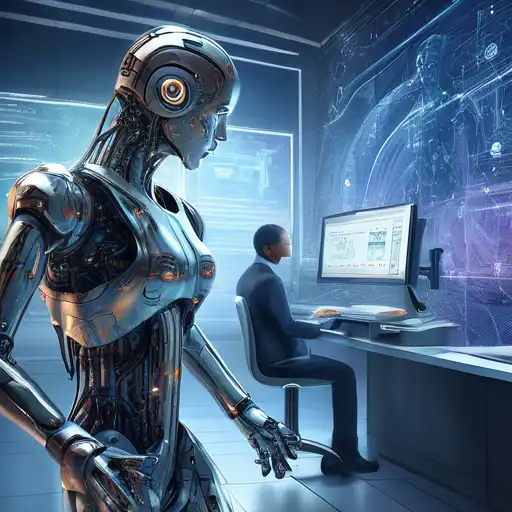Introduction to AI and Machine Learning
In the rapidly evolving world of technology, Artificial Intelligence (AI) and Machine Learning (ML) are two terms that often come up in discussions about the future of computing and automation. While they are closely related, they are not the same thing. This article aims to demystify these concepts and highlight the key differences between them.
What is Artificial Intelligence?
Artificial Intelligence is a broad field of computer science focused on creating systems capable of performing tasks that typically require human intelligence. These tasks include problem-solving, recognizing speech, learning, planning, and understanding natural language. AI can be categorized into two types: narrow AI, which is designed to perform a narrow task (e.g., facial recognition or internet searches), and general AI, which can perform any intellectual task that a human being can.
What is Machine Learning?
Machine Learning is a subset of AI that involves the development of algorithms that allow computers to learn from and make decisions based on data. Instead of being explicitly programmed to perform a task, ML systems use statistical techniques to learn patterns in data and improve their performance over time. ML is particularly useful for applications where designing and programming explicit algorithms is infeasible, such as email filtering, detection of network intruders, and computer vision.
Key Differences Between AI and Machine Learning
While AI and ML are interconnected, there are several key differences that set them apart:
- Scope: AI has a broader scope, aiming to simulate human intelligence in machines, whereas ML focuses specifically on enabling machines to learn from data.
- Dependency: ML is dependent on data to learn and make decisions, while AI can be rule-based and not necessarily learn from data.
- Applications: AI applications range from simple tasks like chatbots to complex ones like autonomous vehicles. ML is often used in data analysis, predictive modeling, and natural language processing.
How AI and Machine Learning Work Together
Despite their differences, AI and ML often work hand in hand. ML algorithms are a key component of many AI systems, providing them with the ability to learn from data and improve over time. For example, an AI-powered recommendation system uses ML to analyze your past behavior and preferences to suggest products or content you might like.
Future Trends in AI and Machine Learning
The future of AI and ML is incredibly promising, with advancements in technology leading to more sophisticated and capable systems. Areas such as deep learning, a subset of ML, are pushing the boundaries of what machines can do, enabling breakthroughs in image and speech recognition, among others. As these technologies continue to evolve, they will play an increasingly important role in various industries, from healthcare to finance.
For those interested in diving deeper into the world of AI and ML, exploring data science can provide valuable insights into how these technologies are applied in real-world scenarios.
Conclusion
Understanding the difference between AI and Machine Learning is crucial for anyone looking to navigate the future of technology. While AI encompasses the broader goal of creating intelligent machines, ML focuses on the methods and algorithms that enable these machines to learn from data. Together, they are driving innovation and transforming industries across the globe.
